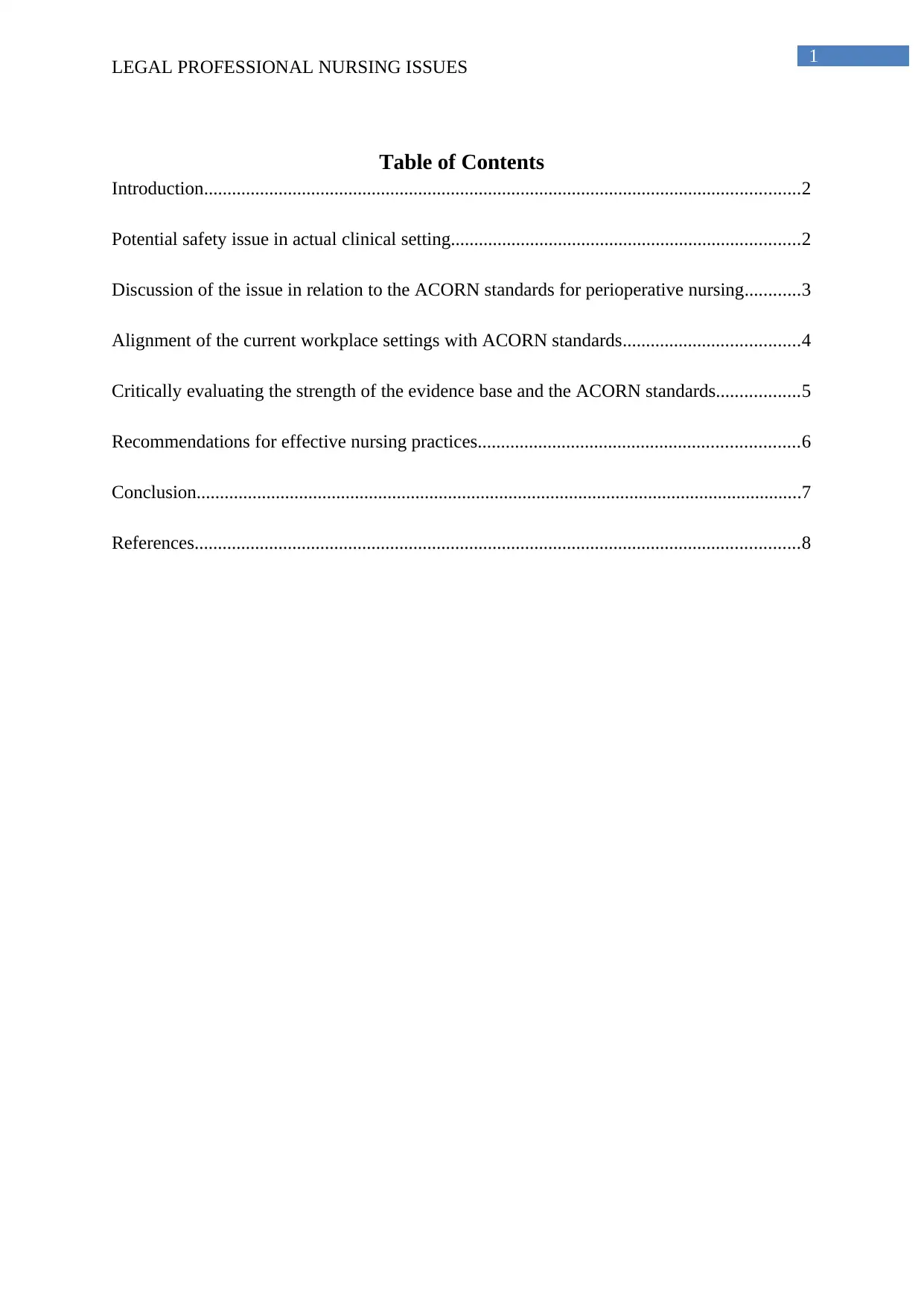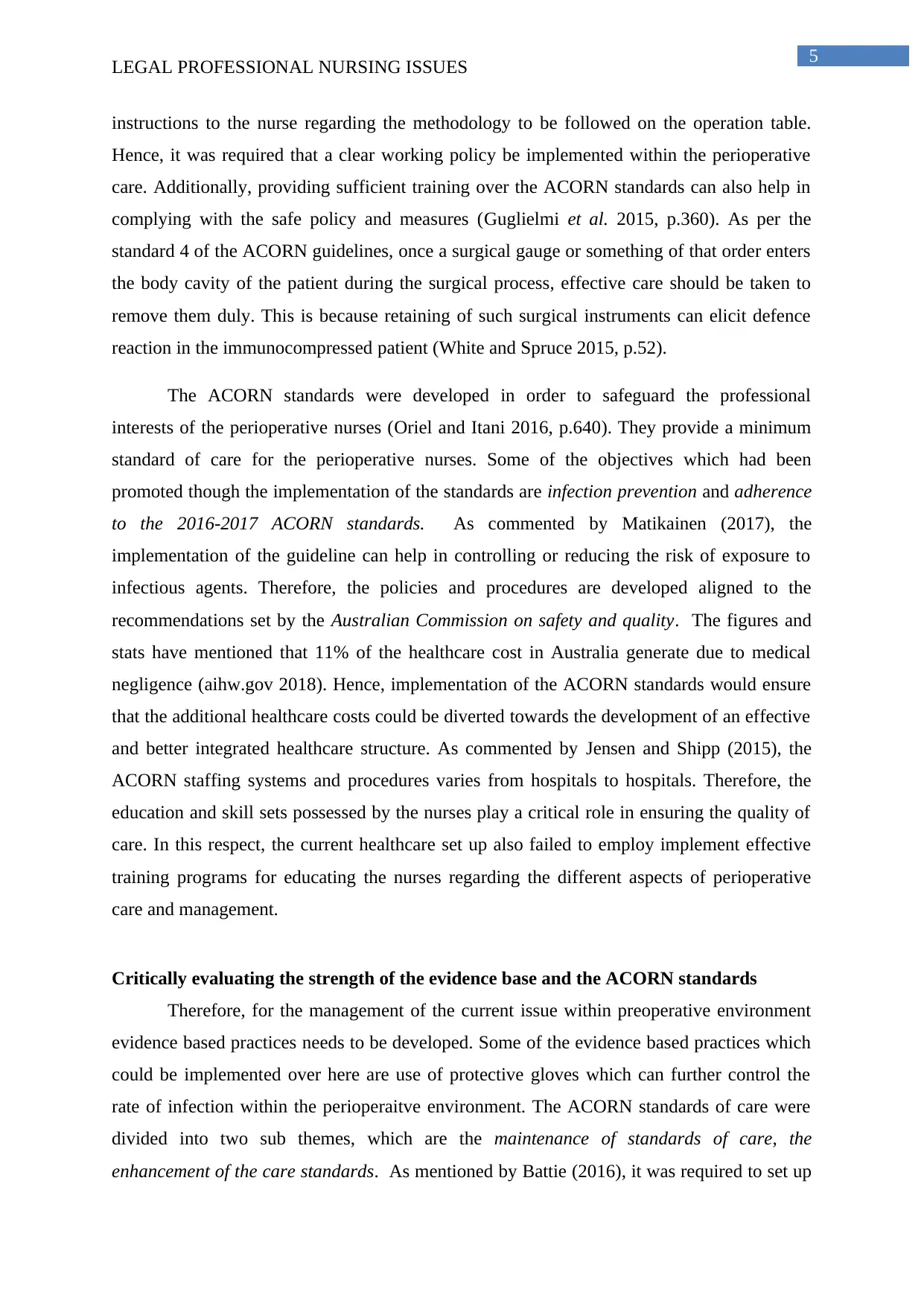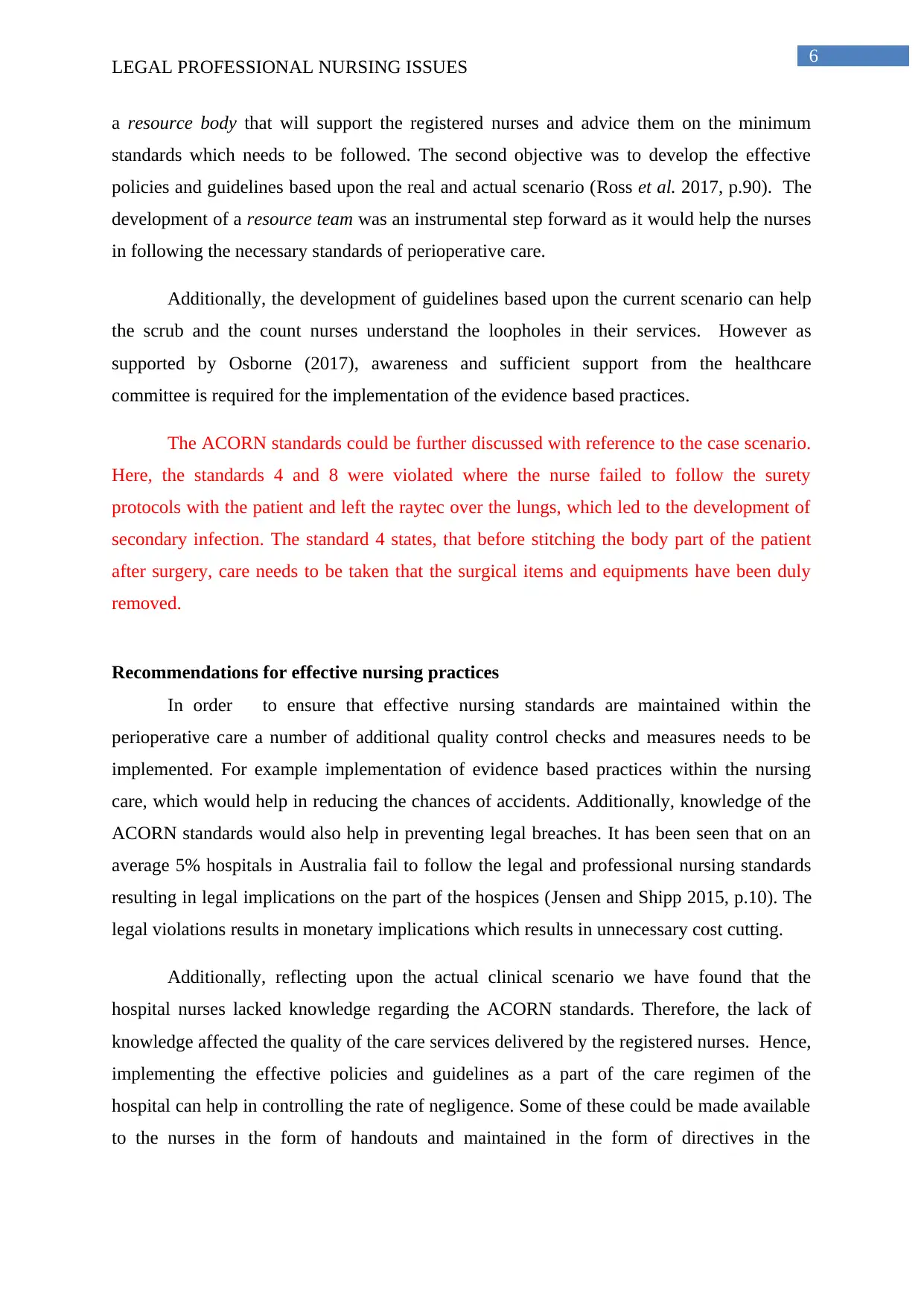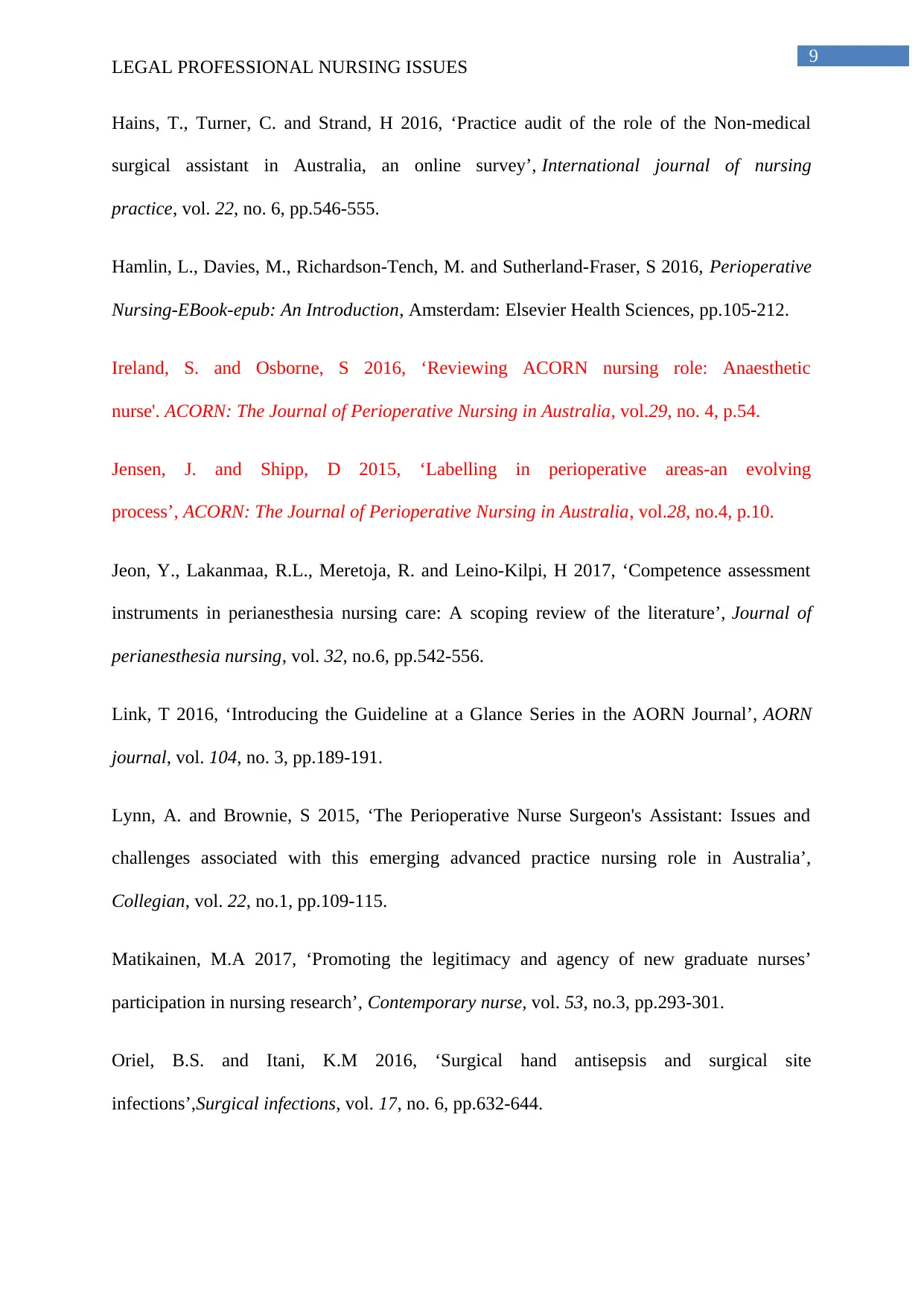The provided document includes various articles and research papers on perioperative nursing practices and guidelines. The articles cover topics such as the role of non-medical surgical assistants in Australia, labelling in perioperative areas, competence assessment instruments in perianesthesia nursing care, and promoting the legitimacy and agency of new graduate nurses' participation in nursing research. Additionally, it includes a practice audit of the role of the Non-medical surgical assistant in Australia, an online survey. The document also provides information on introducing guidelines at a glance series in the AORN Journal and implementing clinical practice guidelines using the Iowa Model of Evidence-Based Practice. It is a valuable resource for students and professionals in the field of perioperative nursing.
![[object Object]](/_next/static/media/star-bottom.7253800d.svg)
![[object Object]](/_next/static/media/star-bottom.7253800d.svg)










